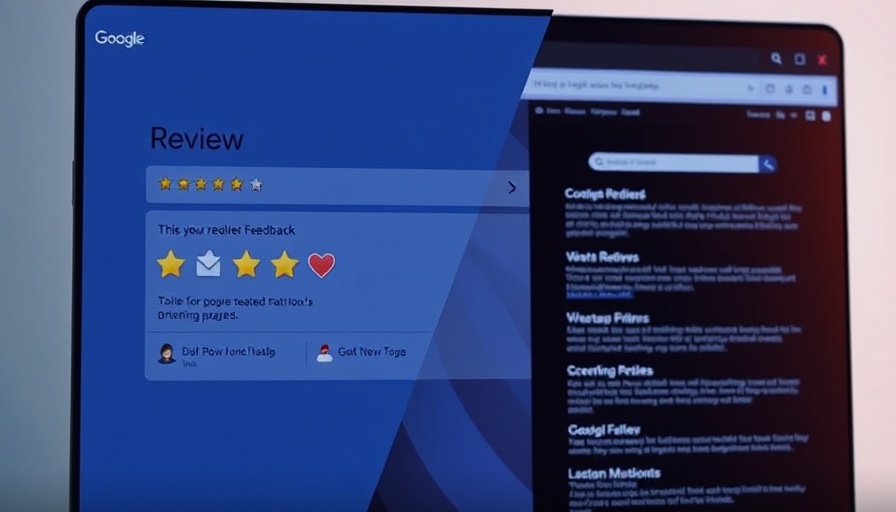
The Importance of Google Reviews for Business Growth
In today’s digital landscape, online reviews hold significant sway over consumer behavior. According to recent studies, nearly 90% of consumers read online reviews before visiting a business. Google Reviews, in particular, have become a cornerstone for local businesses aiming to build their credibility and attract new customers. By cultivating a strong online reputation, businesses can enhance consumer trust and increase their visibility on platforms like Google Maps, thereby gaining a critical advantage in local markets.
Maximizing Your Google Reviews Presence
For small business owners, positioning themselves favorably in search results is vital. Google’s Map Pack, a box that showcases local search results, heavily relies on the quantity and quality of reviews. Customers looking for services often find businesses based on how they rank in this area. Hence, obtaining direct access to leave reviews can make a substantial difference. Simplifying the review process not only encourages customers to share their positive experiences but can turn a hesitant consumer into a loyal supporter.
Making It Easy for Customers to Leave Reviews
The availability of a direct link to your Google Reviews page allows satisfied customers to provide feedback without navigating complex menus. By including this direct link in communications—such as emails, feedback requests, or even via QR codes in physical locations—you significantly reduce the friction in getting reviews. For example, a local café used QR codes on their tables to encourage customers to leave reviews while they waited for their orders.
Engagement: Building Relationships Through Feedback
Responding to reviews is another powerful strategy for engagement. When businesses take time to reply to customer feedback—whether positive or negative—they are showcasing their commitment to customer satisfaction. This engagement fosters a sense of community and loyalty among customers. Moreover, addressing negative reviews properly can turn a potentially damaging situation into a positive customer service experience
Tools for streamlining Review Requests
Utilizing apps and tools that can generate direct review links is becoming an increasingly popular option among business owners. One such tool is the app developed by Martech Zone, designed specifically to streamline this process. It allows businesses to quickly discover their direct review link, making it easier for them to share and encourage feedback. Such tools not only save time but also empower businesses to take control of their online reputation effectively.
Common Misconceptions About Online Reviews
Many business owners may feel daunted by the prospect of asking for reviews, fearing negative backlash. However, it’s essential to realize that soliciting feedback is a standard practice—and when handled correctly, even negative reviews can be beneficial. They present an opportunity for improvement and a chance to demonstrate accountability to potential customers who observe how concerns are addressed.
Future Trends in Online Reviews
As consumer expectations evolve, so will the landscape of online reviews. Businesses that prioritize customer feedback and streamlined review processes are likely to see better outcomes in reputation management. Additionally, integrating AI and machine learning to analyze customer sentiments can inform businesses on how to improve their products or services continuously.
Conclusion: Seizing the Opportunity
Incorporating Google Reviews into your customer engagement strategies isn't just beneficial—it's essential in today's marketplace. By providing an easy pathway for satisfied customers to leave feedback, engaging with them sincerely, and utilizing dedicated tools for simplifying the process, businesses can enhance their online presence, establishing not just a brand, but a loyal customer community. Every review is a chance not only to showcase your business but also to learn from your customers. Take action today by generating your own direct Google review link and start nurturing your business’s online reputation.
 Add Row
Add Row  Add
Add 




Write A Comment